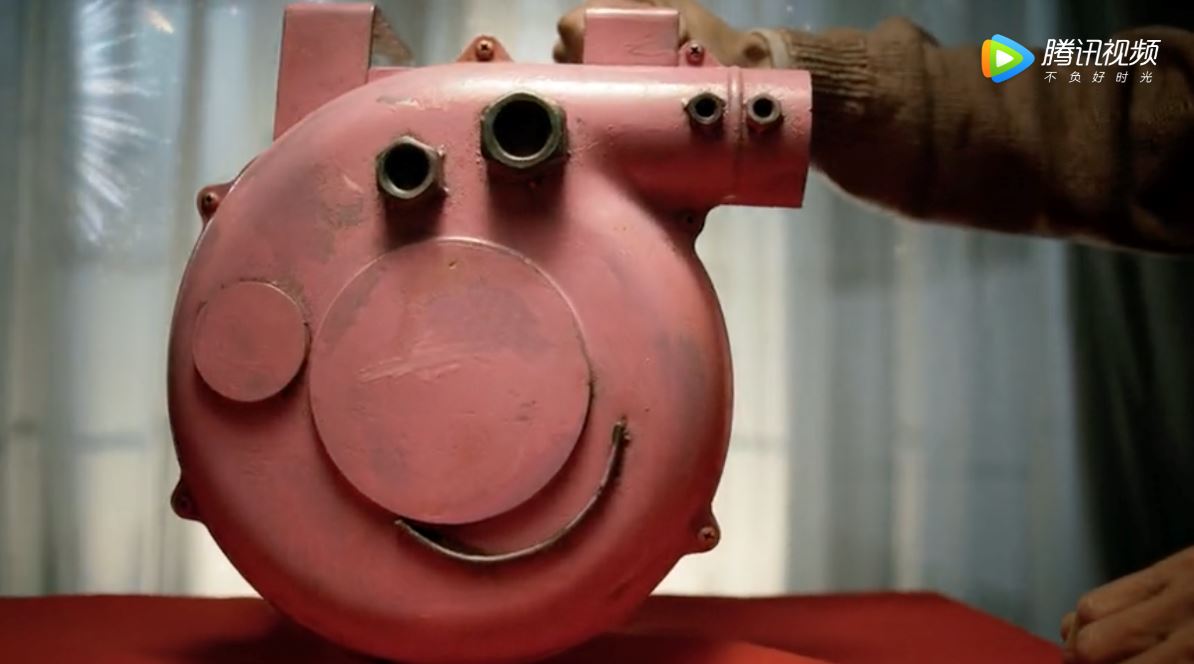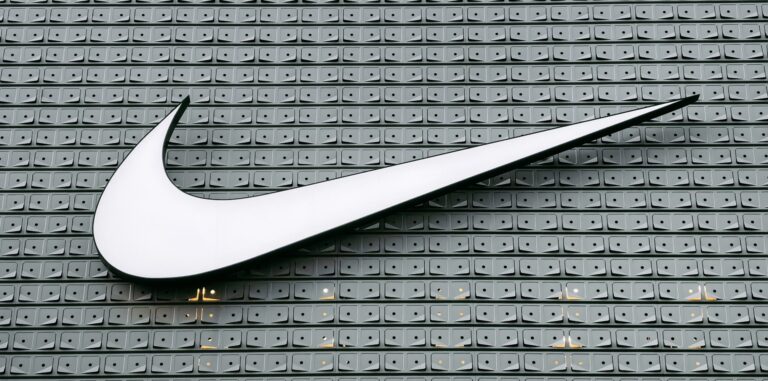Trends of the top China marketing campaigns of 2019
2019 brought creative China marketing campaigns from many industries. Our team looked at the marketing campaigns of 2019 and chose ten of the most epic to analyze. Some of the trends observed in 2019 that we expect to stay for 2020 were co-branding, social media marketing, and the merge of online and offline in advertising. Additionally, TV commercials have maintained a positive effect on Chinese consumers, especially those that are emotionally moving or humorous.
How two classic brands’ appeal to young consumers through co-branding in China
Co-branding is a marketing campaign where two or more brands partner up to achieve mutual marketing benefits. This China marketing campaign combines the market strength, brand awareness, and cachet of multiple brands to increase customer base, profitability and market share of both brands. Although successful co-branding in China can bring many benefits, companies should choose co-brand partners carefully to avoid decrease of positive brand association that arise from unsuitable collaboration.
2019 was a big year for many ‘time-honoured’ Chinese brands as they collaborated with younger brands in order to reach a broader and younger customer base. Many famous ‘time-honoured’ Chinese brands struggled to maintain presence in the Chinese market as the age group that constitutes the consumption backbone in China grows increasingly younger. This is mainly due to younger generations’ rising discretion in the choice of brands and their preference towards a novel experience over exquisite craftsmanship. For millennials, who are the main consumers of the current Chinese market, older brands wish to induce a feeling of nostalgia that targets their childhood memory. By co-branding with younger brands, these two older brands increased brand awareness through nostalgia marketing in China.
1. White Rabbit x Scent Library (大白兔x气味图书馆): Co-branding and nostalgia marketing in China
White Rabbit is a 60 years old shanghai-based brand that produces milk-flavoured candy. In 2019 it collaborated with Scent Library, a domestic fragrance brand, and launched a variety of skincare and home décor products including perfume, fragrance, and lotion. All the products from the campaign were infused with White Rabbit’s signature milk candy flavour. The products were strategically launched during Children’s Day, which triggered a rise of nostalgia among millennial consumers. More than 14,000 co-branded products were sold out in the first 10 seconds after the crossover collaboration was launched on Tmall on May 23. As a result, the collaboration range had resulted in 15 times more visitors and 1.6 times increase in sales revenue in the two months after White Rabbit debut its online store.
Scent Library is not White Rabbit’s only co-branding partner. The brand also launched a limited-edition lip balm with Maxam(美加净) and milk-candy gift box with agnes.b which tested the water for its future brand collaboration and provided a base measure for its future cross-over. Through co-branding in China, White Rabbit has capitalized on taste, smell, and appearance. White Rabbit re-captured target consumers and successfully morphed its brand image from an old brand to a classic, fashion and living brand.

[Source: Tmall App Co-branding in China – White Rabbit x Scent Library’s China marketing campaign]
2. Wang Wang x Nai Xue’s Tea (旺旺x奈雪の茶): Co-branding and nostalgia marketing in China
Wang Wang, a food manufacturer famous for rice crackers and flavoured drinks, joined hands with Nai Xue’s Tea this year. Similar to White Rabbit, Wang Wang also chose to launch its collaborated products on Children’s day, a day where their target consumers reflect on childhood memories. The collaborated products include Wang Wang milk flavoured drinks, Wang Wang milk custard, teacups with Wang Wang logo and more. This brand collaboration went viral online and was very successful given its limited-edition nature.
Marketing strategies that use emotion are proven to be successful. Moreover, nostalgia marketing in China often resonates with millennials. Therefore, brands can leverage optimistic feelings and encourage consumers to take action.
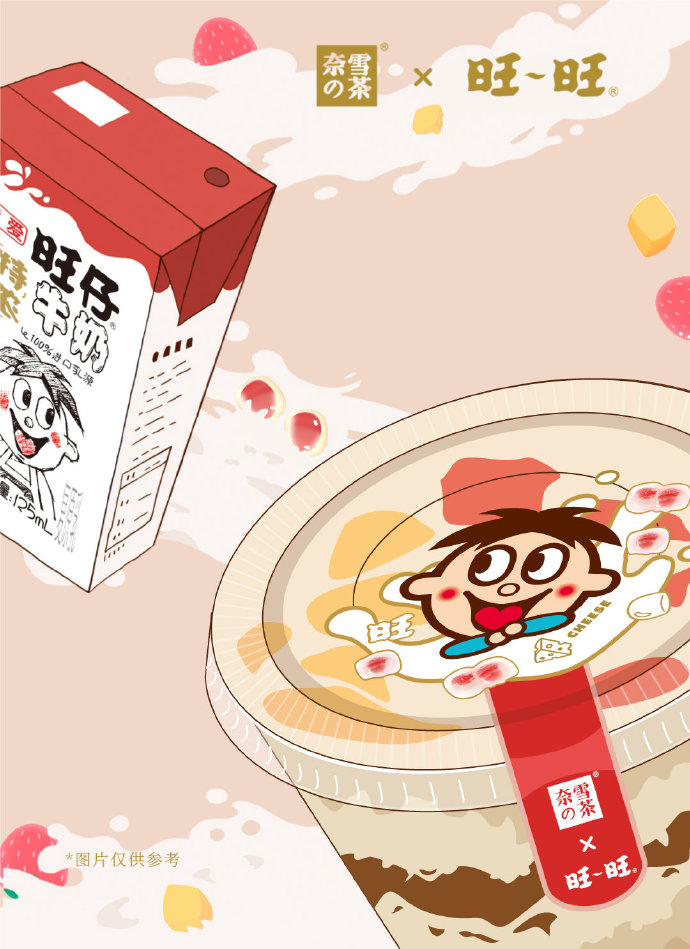
[Source: Nai Xue’s Tea Weibo Co-branding in China – Wang Wang x Nai Xue’s Tea’s China marketing campaign]
How these two fashion and cosmetics brand collaborations created excitement in 2019
Many fashion and cosmetic brands have launched co-branding campaigns in China with unlikely partners. Given the limited edition nature of their goods, co-branding campaigns in China use hunger marketing, in which there is a limited quantity or limited time offers on the product to create an illusion of excess demand. The first round launch of limited edition is a good means to test the demand of collaborated products and then increase supply accordingly. Scarcity can casts a luxury feeling on the products and hence adding additional value to products.
3. Uniqlo x KAWS (优衣库x KAWS): FOMO marketing in China
In 2019, Japanese clothing brand Uniqlo teamed up with KAWS, an American visual artist and designer, to launch a collaborative capsule worldwide. This collaboration went especially viral in China. The images of the line of people rushing into the Uniqlo China store to grab a hold of this collection went viral online. Of a total 22 products, 6 million pieces were completely sold out on launching day. In addition, the hashtag #优衣库联名款遭哄抢#(#Uniqlo collaboration was snapped up#) reached 470 million view and 5.5 million engagement rate on Weibo on the launching day.
Notably, Uniqlo has actually launched a few collections with KAWS in the past two years. Although the market response was always positive, this year’s performance was unprecedented. In fact, the hype of this year may be attributable to Dior’s KAWS collection as well as the public statement that KAWS himself had made on social media. He mentioned that the 2019 collection will be his last with Uniqlo. Both factors have probably induced some fear of missing out. The limited temptation did provide some kind of luxury side to this collaboration, and made it seem more attractive than ever before.
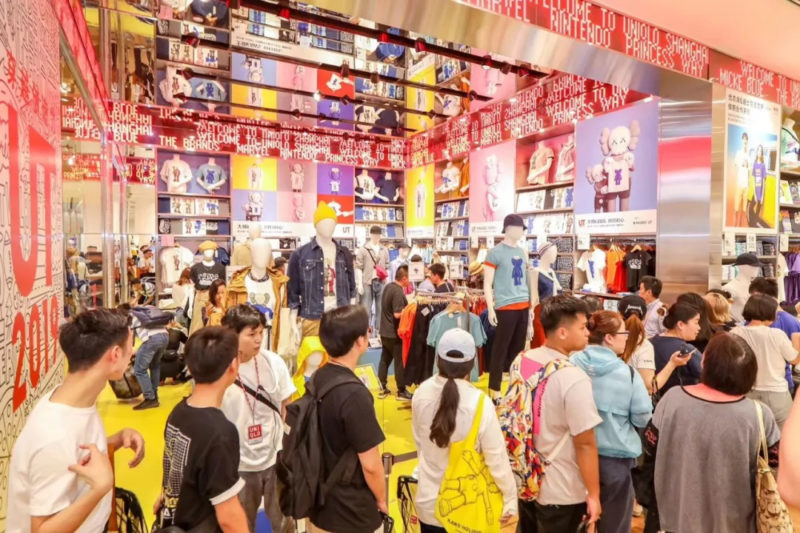
[Source: 36Kr Line of Co-branding in China – Uniqlo x KAWS’s China marketing campaign]
4. Perfect Diary x Chinese National Geography (完美日记x中国国家地理): Unlikely 11.11 collab and KOL marketing in China
Perfect Diary launched four eye shadow palettes this year with Chinese National Geography, a magazine similar to National Geographic. Such crossovers of different industries are increasingly common in China. The colour theme of the eye shadow palettes mimicked four different geographic sceneries in China. KOLs and influencers were invited to implement pre-excitement of the launch. The amount of exposure of this collaboration reached over 400 million, while over 130,000 palettes were sold during the Double Eleven shopping Festival in 2019.
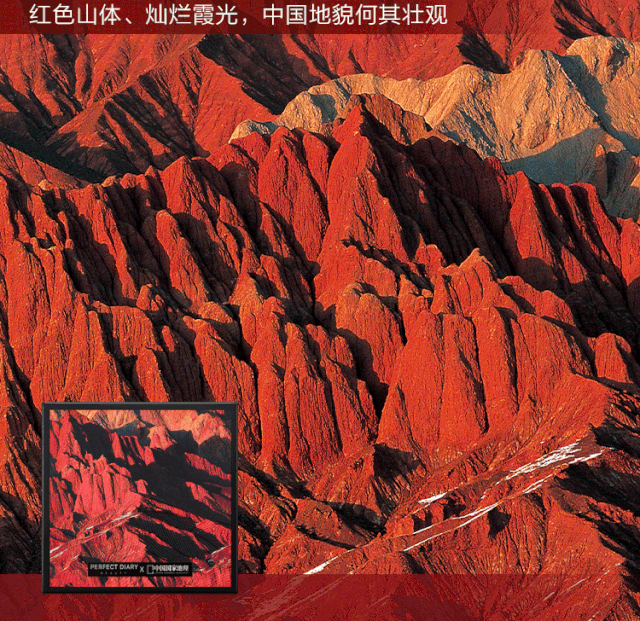
[Source: Digitaling Co-branding in China – Perfect Diary x Chinese National Geography’s China marketing campaign]
One outstanding social media marketing strategy in China 2019
Social media marketing in China is becoming increasingly prevalent. A successful social media campaign can build brand engagement, drive private traffic and increase sales. The major social media platforms in China include Weibo, WeChat, Douyin and Xiaohongshu.
5. Starbucks cat claw cup: Pre-launch heat generated by social media marketing in China
The Starbucks cat claw cup released in 2019 generated craze in China. The cups are transparent and double-walled with a claw built within. The claw shape will emerge as colored drink fills the cup. The cups sold out on the day it was debuted in offline stores. Due to the high demand, Starbucks released another 1,000 cups online that sold out in one second.
On top of being limited edition, Starbucks used social media such as Douyin, Weibo and Xiaohongshu as a marketing tool for pre-launch and pre-heat. The adorable outlook has generated high discussion volume and excitement for the actual launch, which allowed the cup easily to become viral across all platforms. Due to being limited edition, people were compelled to craze and fight to get a hold of the cup. Some would either resell it for a much higher price or show off their purchase on social media.
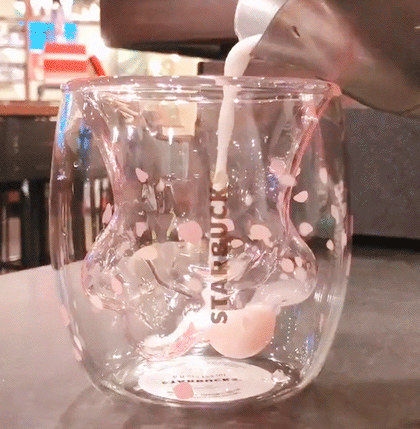
[Source: Zhihu.com Starbucks used social media as a marketing tool in China to pre-launch products]
Three TV commercial campaigns in China that built top-of-mind awareness in 2019
There are also many successful Chinese TV commercials in 2019. However, different from co-branding in China which aim to boost short-term brand awareness and short term revenue growth, TVC campaign in China aim to build long term brand awareness and inject brand value through storytelling. Although TV ads may seem outdated compared to digital marketing, they are proven to be increasingly effective globally, and can leave a long lasting effect in consumers’ minds. Consumers usually expect a few things from TVC campaigns in China in order for them to keep watching and consider an Ad as successful. For one, an ad can use story or humour to keep consumers engaged. Secondly, an ad can be memorable in a positive or moving way. Lastly, an ad can identify the brand itself and allow consumers to get a better understanding of the core brand value. Notably, TVC campaigns in China are not limited to TVs anymore as many now appear on online video playing platforms such as Tencent Video, Iqiyi etc.
Meaningful emotional marketing strategies that convey brand value
6. China Mobile x Migu – What is Peppa Pig? (中国移动x 咪咕 – 啥是佩琦): Pulling the heartstrings of Chinese families
‘What is Peppa Pig?’ is ranked in the top in almost any ad rankings of 2019. The ad doubles as a preview for the Peppa Pig movie, and a marketing campaign for China Mobile. The ad campaign centers around a grandpa in rural China, who is on a journey to find out what is Peppa Pig, which is what his grandson requested for a Chinese New Year’s gift. The commercial went viral among Chinese audiences and received 400 million views on Weibo by the end of 2019.
The story strikes a chord with Neitzens as it connects with the issue of China’s rapid urbanization. China’s elderly are becoming increasingly isolated from their children who migrated to the cities. This TVC campaign had built Peppa Pig into a Chinese socio-cultural context and resonates with viewers’ relationships with parents or grandparents. Moreover, Chinese Mobile also had the chance to convey its brand value, which is that it can connect and bring together families from all across China.
Funny and down to earth TVC campaigns in China
7. Nike – It is stylish to be talented (耐克 – 够来噻,才腔调): Play on Chinese dialect with humor
Nike released a few TVC campaigns in China featuring the Shanghainese phrases ‘够来噻, 才腔调’. ‘来噻’and ‘腔调’ which carry broad meanings. The former is often used to admire someone who did a terrific or impressive job, while the latter one means stylish, classy and good taste.
The most notable commercial of the campaign was released in early November. The commercial features a loyal guard on a journey to find ‘腔调’ (good taste) is for his boss. He tried to find it through different sports and then resigned at the end. It suggests that style, class or good taste is built upon the fortitude and courage to master a sport. The commercial is funny, yet meaningful, in which consumers can receive the motivational message behind the video. As the campaign breaks through the topic via different sports, it also conveys the core brand value ‘Just do it’ insisted by Nike.
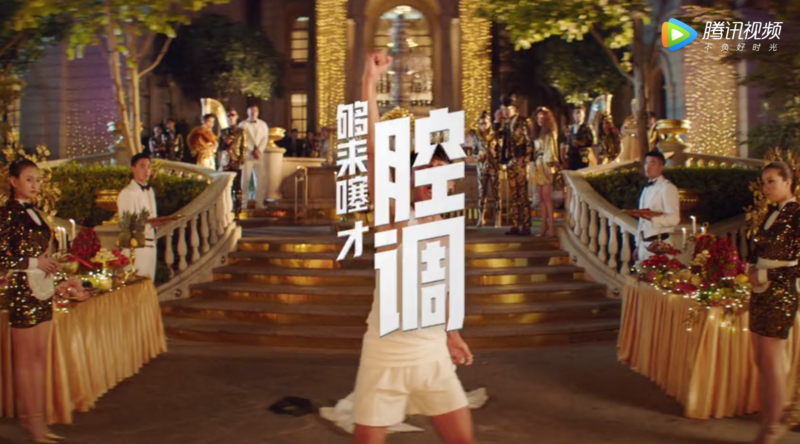
[Source: Tencent Video Screen shot of TVC campaign in China – ‘It is stylish to be talented’]
8. Cadillac – No rear wheel drive, not premium (凯迪拉克 – 没有后驱,不算豪华): Play on Chinese social phenomenon
Cadillac also used a humorous approach to present its recent TVC campaign in China named ‘No rear wheel drive, not premium’ or ‘没有后驱,不算豪华’. The commercial featured a series of eight words phrases that follow the sentence structure of ‘没有 ,不算 ’ to point out different Chinese social phenomenon. The heavy social problems are twisted using humour that intends to appeal and connect to target audiences in a light hearted way. The phrase ‘No rear wheel drive, not premium’ is repeated throughout the ad. However, the repetition is engaging and perhaps even brain washing, as the slogans did not pop-up in nonsense order and are connected to other parts of the ads.
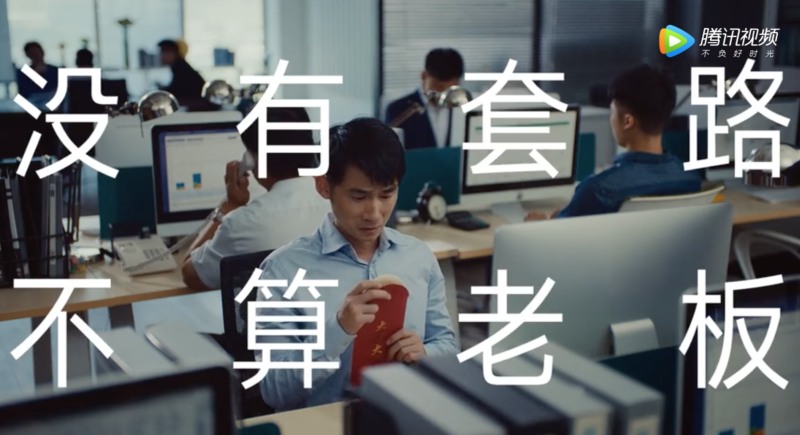
[Source: Tencent Video Screen shot of TVC campaign in China – ‘No rear wheel drive, not premium’: If there’s no Trap, he’s not a boss’]

[Source: Tencent Video Screen shot of TVC campaign in China – ‘No rear wheel drive, not premium’]
Two brands that joined an online and offline marketing campaign in China
Like new retail, advertising is also merging online and offline. More and more brands are choosing to hold joint online and offline marketing campaigns in China. Such a campaign can attract attention and create buzz across all channels. Large amount of organic private traffic maybe expected. People are likely to post and share on social media if they see or experience an offline event on the street. With joint online TVC campaign in China, brands are more likely to increase brand awareness, and in these cases, increase sales.
9. Huawei Mate P30 – 5G brings us together (华为Mate30 – 让距离跨越距离)
In order to promote for its Mate P30 5G, Huawei launched a joint online and offline marketing campaign in China. Huawei cut a piano in half and placed each half in a different city. People walking by are encouraged to play the piano, and sounds played by each half are synchronized using Huawei Mate 30 5G. This campaign did not only break down the distance between people, but also sent the message that 5G can actually bring people together. Apart from the offline campaign, a TVC campaign in China by Huawei was also released in which the experiences were recorded. The joint campaigns are likely to generate more engagement then just a pure online or offline campaign.
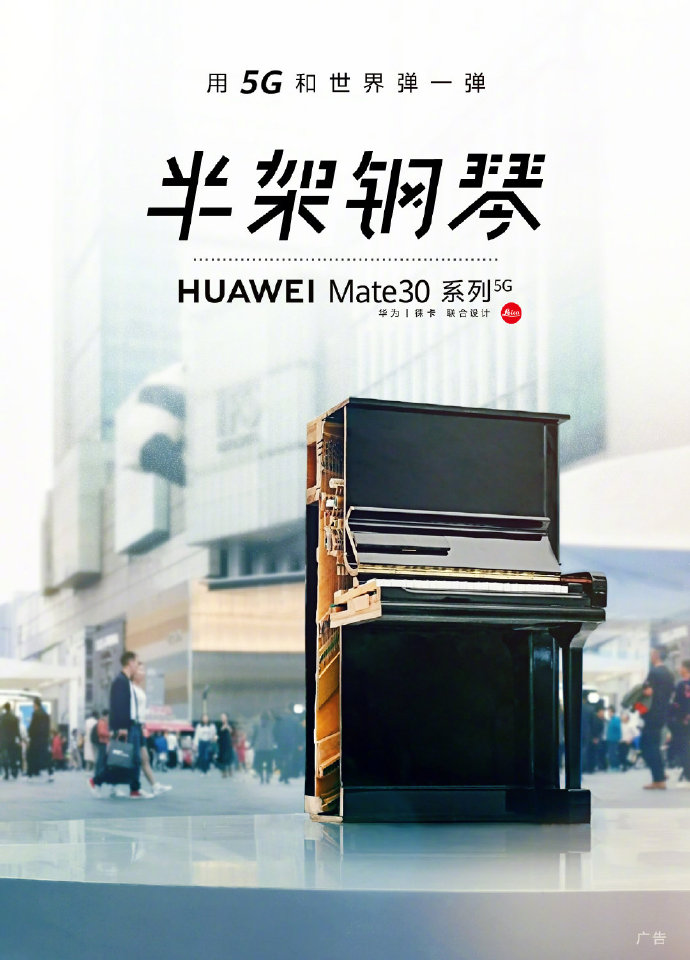
[Source: Huawei Joint online and offline marketing campaign in China – ‘Half piano’]
10. DeRucci – Dream at the Great Wall of China (慕思 – 追梦 长城夜)
DeRucci organized a concert on the Great Wall of China with musician Max Richter. The brand invited 350 people to enjoy the 8 hour sleeping concert on its branded bedding products. As the campaign was live streamed online, the Weibo topic #长城8小时睡眠音乐会# or in English, #8 hours sleeping concert on the Great Wall of China# reached over 20 million views in just a few hours. This was not only a novel joint experience, but also a creative co-branding initiative as the concert was held by a world famous musician. Moreover, the campaign was special in the way that it reached into modern consumer lives. This event created a spectacular environment and provided an excuse for people that live in the fast pace society to slow down and have a good rest and a memorable experience. Clips of the event were promoted on social media and went viral, bringing the offline experience online.

[Source: DeRucci Marketing campaign in China-DeRucci Night’s China marketing campaign]
Indeed, there are many successful marketing campaigns in China 2019. Brands are seeking more creative channels and interesting ways to create an experience and deliver brand value.
Author: Chenyi Lyu
How can your brand have one of the most epic marketing campaigns of 2020?
Get started with the right China market research. Brands first need to identify their target consumer needs and understand the competitors. From there, find creative ways to target consumers through a digital strategy, the right KOLs, or perhaps find a co-branding partner that shares the same target consumers. Contact our project team at dx@daxueconsulting.com to start your China market research project.


